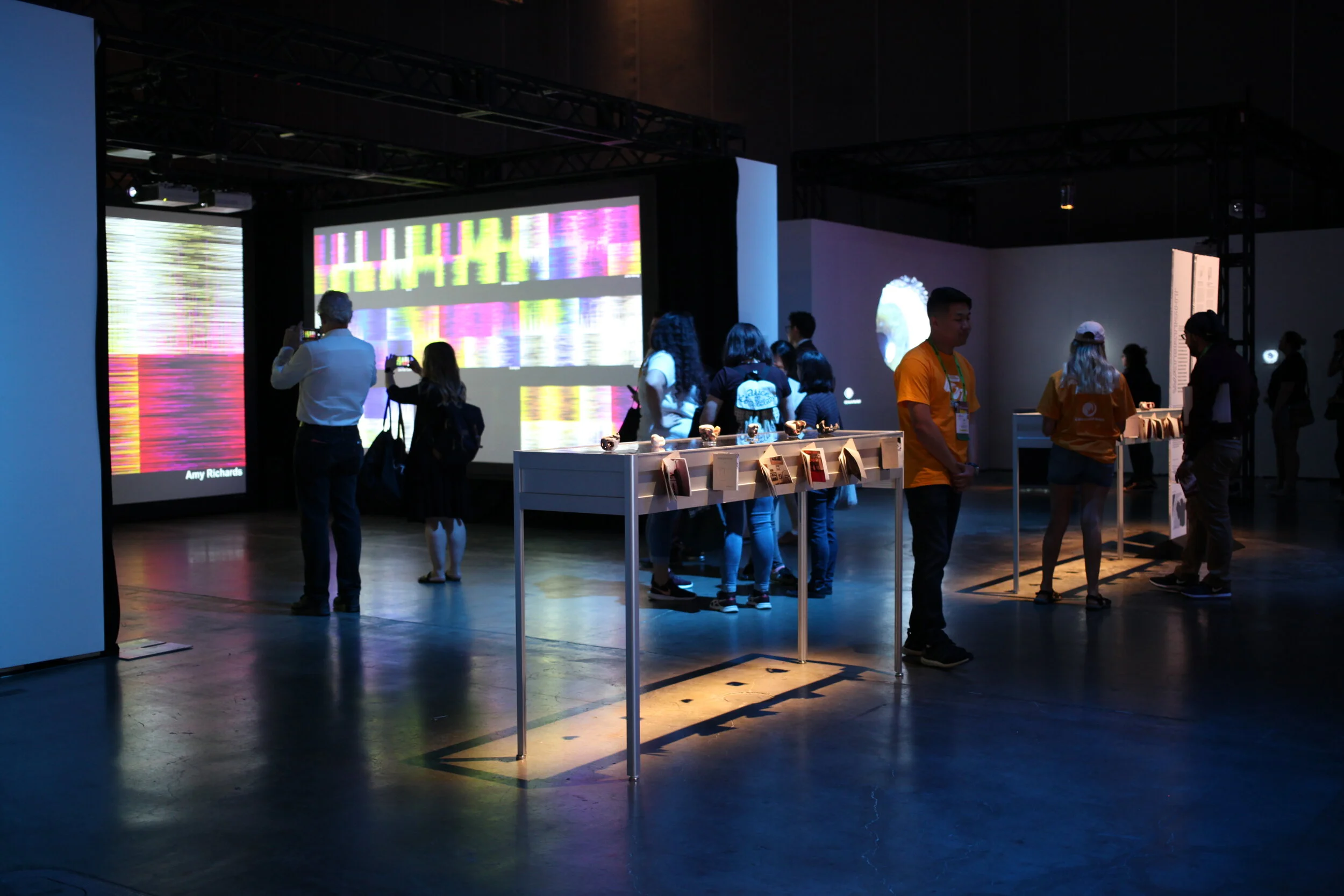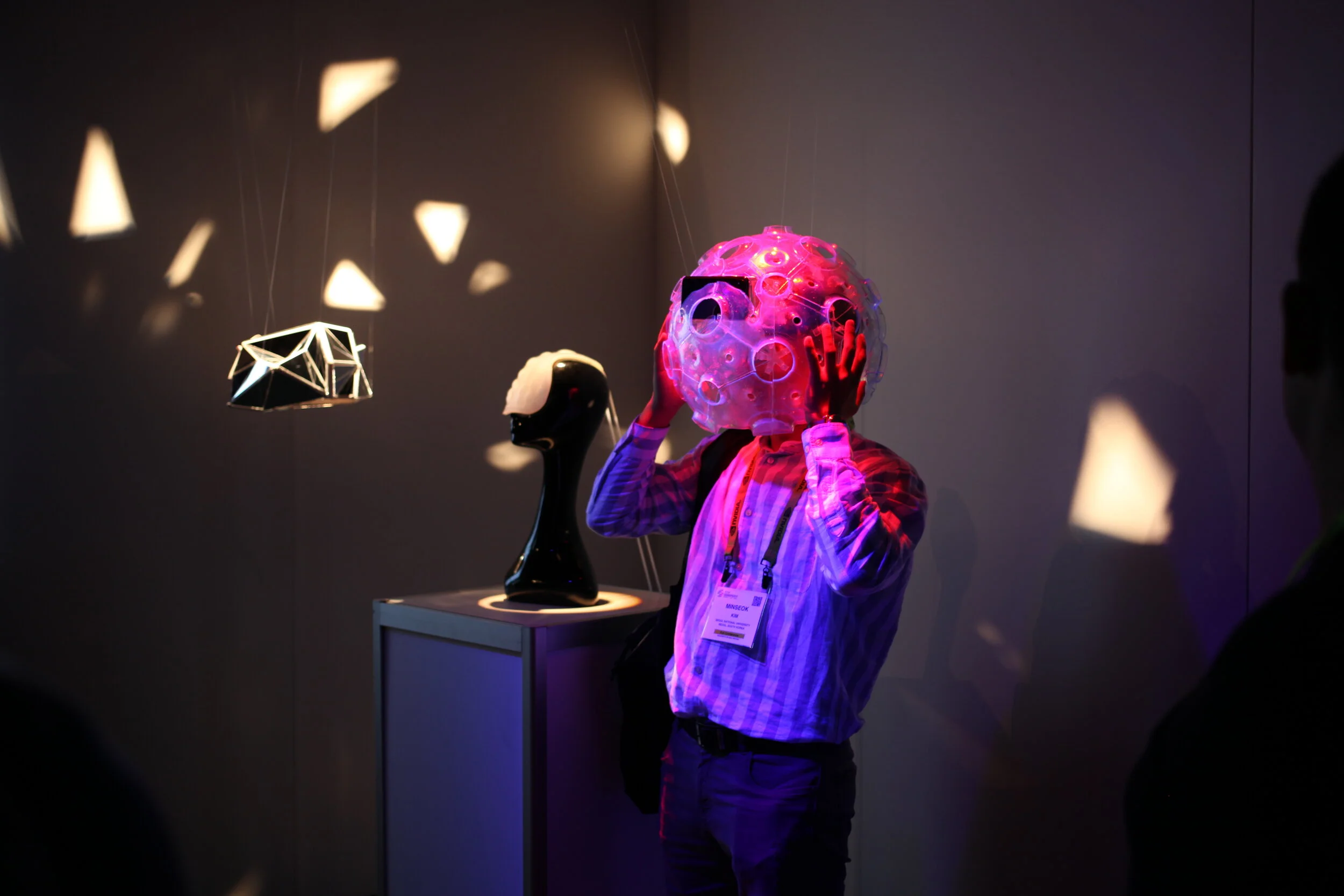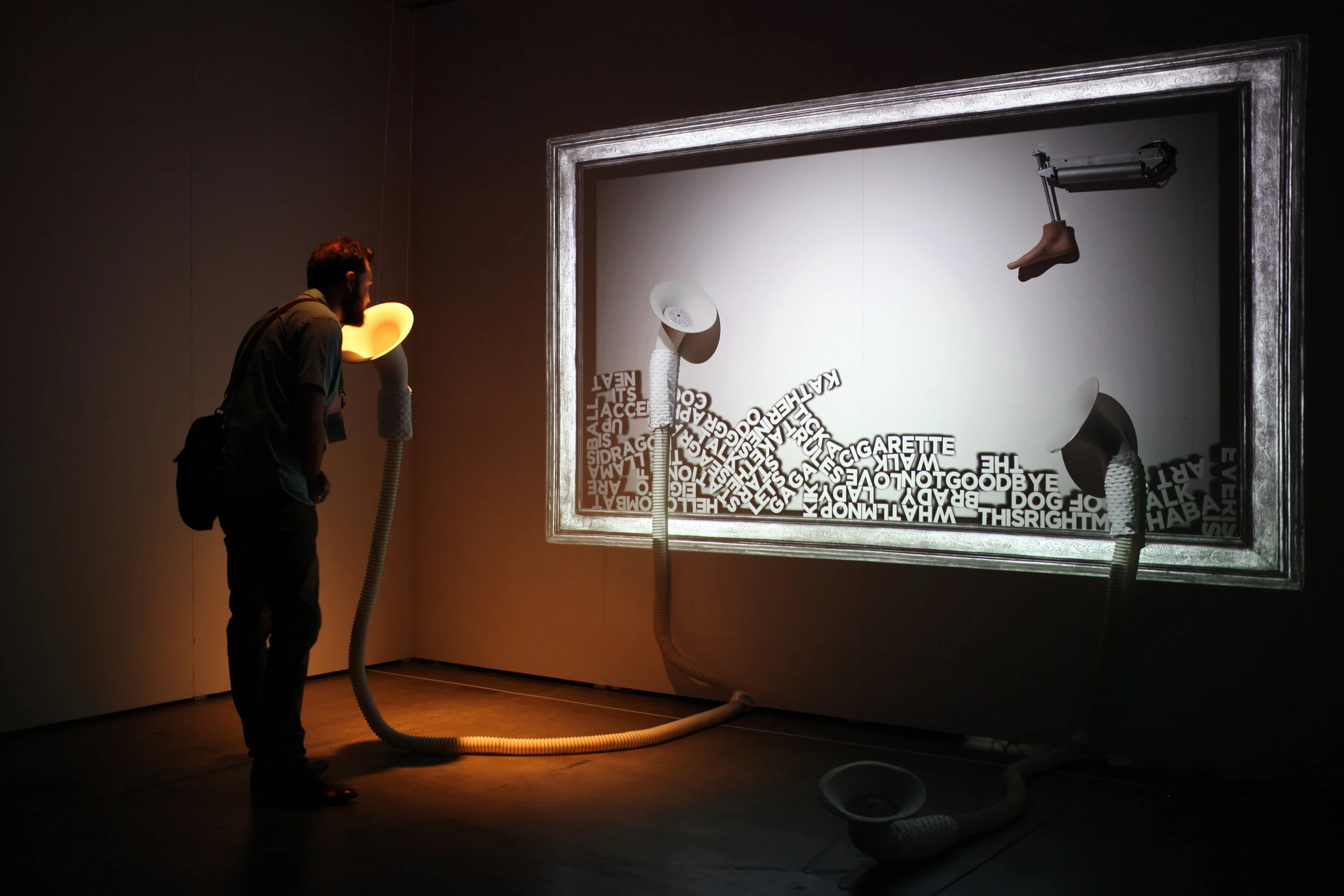









2019 SIGGRAPH Arg Gallery Chair / Curator, Los Angeles
Proliferating Possibilities: Speculative Futures in Art and Design
The SIGGRAPH Art Gallery has historically existed as a leading space for artists whose practices fuse compelling creative vision with technological innovation. The SIGGRAPH Art Gallery has continually established itself as a leader in generating an annual space for creative contemplation within the Art and Technology community. For the first time in three years, the Art Gallery returned to an opened juried call, allowing the opportunity and conversation within this area of the conference to be shifted back into the hands of a global art community.
In light of shifting ecological, political, social, and global-relations climates, this year’s theme Proliferating Possibilities: Speculative Futures in Art and Design, offered artists the opportunity to submit their creative works that examine the present and future while ultimately considering the question, “What can we do?” Calling to a future full of promise and unknowns, this year’s theme was meant as a propositional speculation of the issues we face and how we as artists might address them. Since the inception of SIGGRAPH 45 years ago, art, design, and technology have continued to propel us into an interwoven evolution of creative practices that fuse elements of research, fabrication, and artistic practices from around the globe and the 2019 exhibition continues to highlight these achievements. Artists have and continue to incorporate hybrid practices, digital fabrication technologies, science, architecture, design, and virtual and augmented platforms in their work as a means of exploration around crucial societal questions.
This year artists addressed our unknown future through technically challenging, visually poetic, and physically immersive installations that explore artificial intelligence paired with embodied experiences, the ocean and under water environments, and monitoring the body in ways that expand upon our sense of self and our physical needs in the future.
Artificial intelligence (AI) plays a large part in this year’s exhibition and continues to be an area of research that artists explore as we move into a continuously evolving world of machine learning devices. RuShi, created by John Wong, is a contemplative piece that explores the notions of big data and artificial intelligence as a new type of fortune teller that pairs ancient histories with new technology. Using the ancient Chinese fortune telling system of BaZi paired with an algorithmic AI, visitors are bathed in a saturated colorful pallet of projected light created based on their birthday that ultimately reflects their destiny through this generative system. Immersive AI continues throughout the exhibition with Lavin, created by Jieliang Luo and Weidi Zhang, that explores our own understanding of neural networks within the real world. Mapping a series of daily objects, this installation allows viewers to navigate a virtual world made of fluid abstract structures through an embodied experience. In a more playful approach, artist Brigitta Zacs presents her work The Pachinko Machine, an AI pinball machine reminiscent of this traditional game originating in Japan. Zac’s machine plays the game by itself, continually improving its odds of winning through performance changes, though ultimately unable to obfuscate a second intelligence cycle within the game. Each of these works points to the future of evolution of smart devices and interfaces though ultimately point to an element of unknown within the algorithm of the future.
While some contemplate our digital futures through AI and machine learning, other artists approached our collective speculative future through tangible immediate environments like our shared oceans and personal dwellings. Fiber Optic Ocean, created by Özge Samanci and Adam Snyder is an installation that explores the sonification of a live data and the relationship between fiberoptic cables that lay at the ocean floor and live sharks. This work creates an immersive environment that highlights the consequences of our internet cables that physically connecting our continents through international waters. This connectivity results in sharks biting these cables as their magnetic fields are thought to be intercepted by sharks who mistake them as prey. This work ultimately points to our connective technological interventions for the sake of humanity yet our constant ignorant disruptions of natural ecological systems. Victoria Vesna’s and Martina Fröschl’s visually stunning and immersive Noise Aquarium (as seen on the cover) provides a more playful yet poignant approach to presenting environmental issues concerning human waste, unnatural noise pressure waves, and their direct affects on our oceans. Vesna and Fröschl’s work presents a rich installation where viewers are faced with ephemeral animated plankton, the cornerstone of the oceanic food chain, as well as plastic within a seemingly idyllic environment. The viewer must center themselves on the platform where they are greeted by an enlarged plankton but also met with underwater noise pollution derived from such things as fracking and sonar. This work suggests our need to resolve the crisis within our oceans which will ultimately impact our own survival in the future.
While considering the inhabitants of our ocean, Akira Nakayasu’s piece Tentacle Flora provides a complex robotic sculpture whose fabricated yet delicate movements and formal sculptural qualities are reminiscent of a sea anemone found on the ocean floor. Calling further to the primitive organisms that are critical to our own environment, this work explores the notion of what it means to be alive and imitate ocean creatures that if we are not careful, may not exist in the future. Traveling through the aqueous from the expanse of the ocean, Ziv Schneider’s WATERTIGHT zeroes in on spaces that are acutely intimate. Schneider’s work is a specimen like collection of hand held sized full color 3D prints of single-occupancy human habitats. Each 3D printed portrait is a shell protecting each person who inhabits it. Operating like an oyster shell producing a pearl, each 3D scan and print tells a larger narrative that is both personal and global pointing to the accelerating trend of people living along and its impact on housing trends on our global society.
Environmental concern is at the forefront of many works within the 2019 SIGGRAPH Art Gallery though none remain more prevalent than those that address our own human bodies. TransVision, an installation of wearables created by Jiabao Li, Honghao Deng, and Panagiotis Michalatos explores three extreme types of perpetual machines that investigate how we operate and understand the visual world through over amplification of digital media. By over extenuating elements of our visual field through wearable masks, their work collectively explores the filter effect through physical interventions of searching the internet. Each mask presents itself a seemingly dystopic attachment to human body; an appendage that will be required for the future to filter out and decipher the world in the age of digital advertisement.
Shifting from a visual filters to focusing on the eye itself, Yoon Chung Han and Praful Surve’s piece Eyes surveys the eye as a musical instrument. Turning the human iris’s data into a musical score, visitors are invited to scan their own eyes using a custom camera system and produce their own biological sonic signature. Micro gestures and investigations continue through the work Yawn Chorus, an interactive installation made by Alex Rothera and Christopher G. Thompson where for once, yawns are encouraged at SIGGRAPH. Yawn Chorus’s goal is to create a yawing orchestra. Using AI, this piece identifies the facial gesture of a yawn, collects it via tracking interface, and triggers a chain reactions of yawns collectively strewn together in an audible and visual chorus of yawning. These biological signifiers are markers for possible ways of tracking human micro gestures for future use. Two final pieces within the 2019 Art Gallery round out the exploration of speculative futures through the activations of the human body. In Knowing Together, Rosalie Yu explores human gesture through 3D photogrammetry exploring the human embrace. As we continue to cling more tightly to digital interfaces rather than to one another, this installation is a response to expression of embodied experience presented as accumulations of human embrace in three-dimensional sculptural forms and accompanied research. While physical touch plays a pivotal role within our human nature, speech is equally important in human connection. Neil Mendoza’s Robotic Voice Activated Word Kicking Machine, is a direct exploration of language and our relationship to talking to machines. Considering systems like digital assistants at home, automated customer service bots, to our phones, this work takes viewers spoken words and converts them into text within a visual world; As words accumulate some are kicked by a robotic foot while others are said back aloud and played as sound ultimately toeing the continual crossover between the virtual and physical spaces in which we now all exist.
Ultimately the selected works in the 2019 Art Gallery all playfully question our current artificial intelligence systems, environmental concerns, and activate the human body while representing a worldwide perspective and exhibition responding to our collective speculative future and the possibilities that lay within to answer questions indicative of our own human condition.